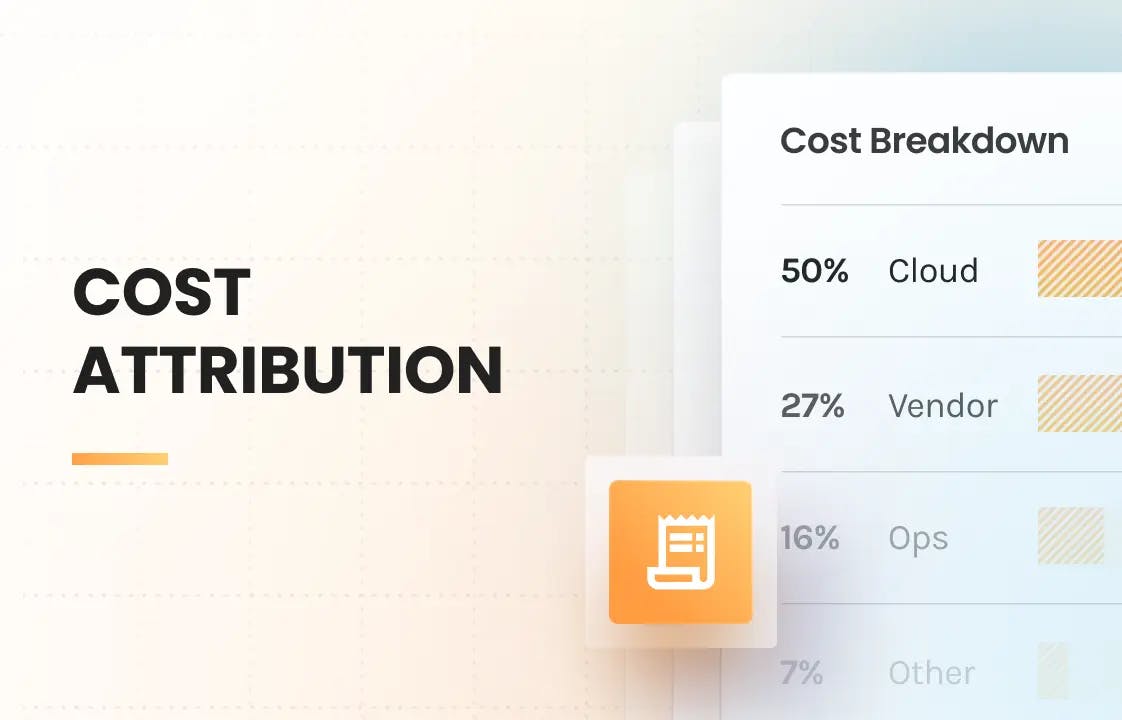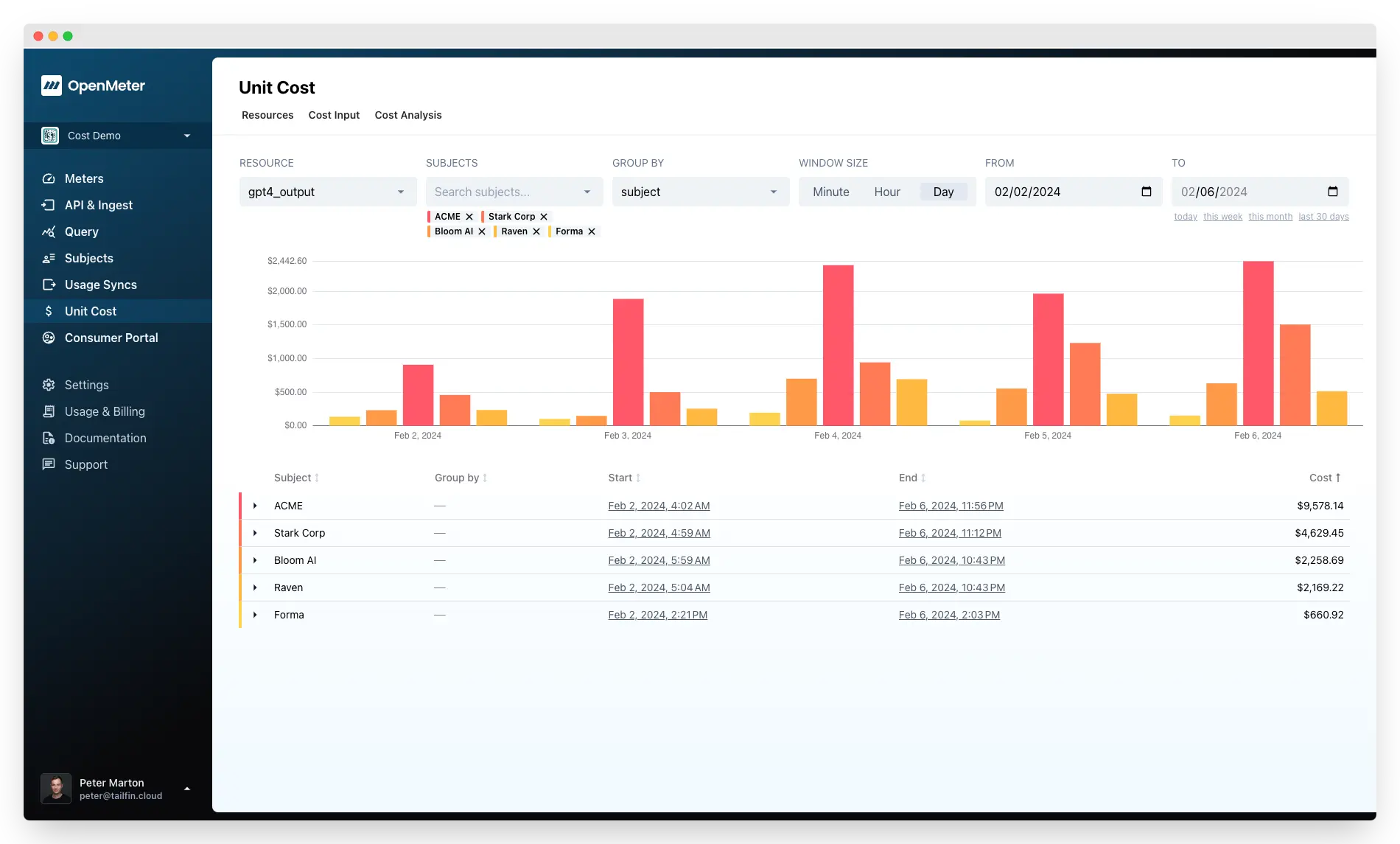
Companies need to attribute shared costs to customers and internal teams to increase accountability and achieve margin and profit goals. This is especially true for expensive resources like LLMs, GPU, cloud, and vendor cost.
To effectively manage cost leadership, finance and engineering must speak the same language. This is where unit cost and internal rate cards enables effective budgeting and forecasting by creating a contract among teams providing services to each other.
OpenMeter's FinOps unit economics solution enables companies to attribute shared costs to customers and internal teams. With our dynamic pricing models, you can also forecast vendor costs like OpenAI token usage, even before the bill is issued.
How to get started?
OpenMeter's unit economics combines cost and meters into resources. Each resource can have one or multiple associated costs, which then get denormalized and attributed based on the assigned meter.

You can break down resource costs both by customers and group bys. Cost can be ingested into OpenMeter in multiple ways:
For already-created bills, you can ingest the exact cost for the specific period or set a recurring cost like a vendor subscription.
For usage-based costs like Chat GPT token cost, you can define the unit cost and let OpenMeter forecast the cost. This is especially useful for keeping track of upcoming bills and asses customer costs.
Diving deeper
Unit economics is a powerful tool for establishing a common language between teams. By defining rate cards on top of unit economics, essentially creating an internal static price list of shared resources, we also establish a contract between teams building on top of each other's services. This helps teams forecast, budget, and make decisions when architecting a new service or prioritizing efficiency work.
By building a unit of economics and expressing it in cost-per-transactions, the cost of a customer interaction we can bridge the gap between non-technical teams and engineering. This places cloud and vendor costs in the perspective of product, customers, revenue, and growth. This paradigm shift alters how products are priced, features are evaluated, and future architectural decisions are made. And eventually leads to increased profit.
Read more about shared cost and rate cards on our blog.
